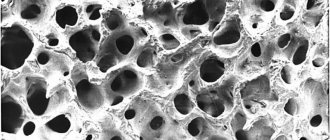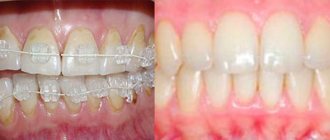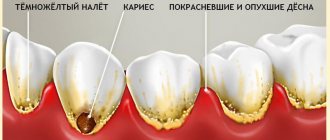Lip cancer is a malignant neoplasm that consists of elements of the integumentary epithelium of the red border of the lips. A tumor on the upper lip appears rarely. Over time, lip cancer spreads to the bones of the lower jaw. Atypical cells are transported with lymph to the lymph nodes, resulting in the appearance of new malignant foci.
Doctors at the Yusupov Hospital carry out early diagnosis of lip cancer using modern research methods. Oncologists provide radiation therapy and perform gentle surgical interventions. In the later stages of lip cancer, complex therapy is used. Early diagnosis of a malignant lip tumor and adequate therapy can not only save the patient’s life, but also avoid cosmetic defects after surgery.
Lip cancer - what is it?
Depending on the type of tumor growth, the following forms of lip cancer are distinguished:
- Papillary;
- warty;
- Ulcerative;
- Ulcerative-infiltrative.
A malignant tumor of the lip in 95% of cases is represented by keratinizing squamous cell carcinoma. In 5% of cases, histologists have squamous cell non-keratinizing cancer of the lip mucosa. A tumor of the lip, which from the inside, on the mucous membrane, is characterized by a malignant course (infiltrative growth and early metastasis to regional lymph nodes).
A tumor of the lower lip most often affects the border of the lower lip. A crack, ulcer or swelling forms on it, which looks like a wart. The disease is predominantly diagnosed in people over 60 years of age.
Cancer of the upper lip occurs less frequently than the lower lip, but the tumor is more aggressive. Upper lip cancer has a high risk of metastasis and spreads quickly. This is explained by the fact that the malignant tumor is located close to the nasal cavity, where the blood supply system is developed. A tumor on the inside of the lip is dangerous because it quickly grows into the soft tissue.
Melanoma on the lip is 10 times less common than squamous cell carcinoma of the lip, but is characterized by a high degree of malignancy. Basically, the tumor is located on the red border of the lower lip. It penetrates deeply into tissues, quickly transfers to nearby tissues and gives metastases.
At the Yusupov Hospital, oncologists make a diagnosis of lip cancer using the following methods:
- Examination with the naked eye and using stomatoscopy;
- Cytological examination of impression smears from a tumor ulcer;
- Histological examination of lymph node punctate.
After establishing the primary diagnosis, a comprehensive examination of the patient is carried out.
Structural features
The main and prominent part of the lips consists of muscle fibers, axillary connective tissue, collagen fibers, as well as fatty compounds, which are especially noted in the submucosal area. Their number determines the shape, contours, and plumpness, which can be corrected using special medical procedures. Structural changes in the musculocutaneous fold are noted up to 16 years of age. After 45 years, due to the deterioration of the regenerative abilities of tissues, the weakening of muscle fibers, the thinning of collagen compounds and other processes that accompany aging, the shape of the lips may change. If we consider the structure of human lips, we can distinguish three distinct zones:
- Skin.
- Transitional.
- Mucous.
Each part has certain structural differences and purposes.
Skin area
This part is not particularly different from the skin of the face. It also consists of the epidermis, dermis, and subcutaneous fat. There may be keratinized particles, and there may also be hair, fat or sebaceous glands.
Transition zone
This part is often called the red border, since it is the transition to the pink area that is considered its border. The transition zone is divided into an outer region and an inner one. The outer one has a characteristic pink color, the surface is smooth, and there are no sweat glands. The inner region originates from the place where the lips close and is sometimes called the villous region. It is distinguished by a pronounced pink-red color, since many blood vessels are located near the upper layer of the epithelium. Special papillae are distinguished, which are embedded in the epithelium, which is much thicker than in other zones. Also in this part the ducts of the salivary glands are formed.
The structure of the human lower lip, like the upper lip, involves an accumulation of nerve endings, especially in the transition zone, which explains the sensitivity of this part.
Mucosal zone
The structure is identical to the mucous membranes. The layers of the epithelium are not keratinized, there are relatively many of them. Salivary glands are formed, sebaceous and sweat glands are completely absent. The transition to the salivary gland section is carried out due to its own mucous plate, which also contains accumulations of blood vessels. Next come layers of muscle tissue, connective collagen fibers.
The mucous membrane passes into the gums and a frenulum is formed in the middle of both the upper and lower lips. They consist of elastic, collagen fibers and non-keratinizing epithelium.
Causes of lip cancer
Lip cancer develops for many reasons:
- From smoking;
- After a long stay in the sun;
- As a result of inflammatory processes of an infectious and non-infectious nature;
- Under the influence of high temperatures;
- In the presence of microtraumas;
- Due to prolonged exposure to chemicals.
Lip cancer often develops from smoking. Men get lip cancer much more often than women. Currently, the trend is changing, because many women suffer from tobacco addiction. Doctors believe that lip cancer develops due to smoking strong cigarettes for a long time.
The average smoker smokes at least ten cigarettes a day. In this case, the paper surface is constantly in contact with the lips. The skin here is especially delicate and sensitive. Microcracks appear on its surface. They are invisible to others and do not cause problems for the smoker. Damaged areas of the epithelium are affected by tobacco smoke. It contains a lot of harmful substances. Skin cells begin to degenerate.
The cause of mechanical trauma that causes lip cancer can be improperly made dentures, the habit of holding various objects with the lips (nails, the mouthpiece of a smoking pipe), or biting the lower lip. The mechanism of development of lip cancer is as follows: a long-term non-healing crack, wound, inflammation on the lip, papilloma develops into leukoplakia, Manganotti cheilitis, keratoacanthoma, warty form of dyskeratosis or other precancerous diseases. Against this background, lip cancer occurs.
Hit parade of horror stories for adult girls
So, here are the most common problems that result from unsuccessfully performed labiaplasty.
Lips turn out to be larger than you wanted
Did you dream of Angelina Jolie's plump lips, but got Pamela Anderson's lips? Unfortunately, you were injected with an excessive amount of gel.
.
Amanda Lepore, freak. “Pumped” lips look approximately the same on all types of faces - too unnatural to take their owner seriously.
If this is a modern drug based on hyaluronic acid, then you shouldn’t be too upset. Within a year, hyaluronic acid will dissolve on its own, and the lips will return to their natural shape. However, if the image of a “Malibu lifeguard” is not to your taste, come. Using special Spanish enzymes, we will delicately eliminate excess drug, maintaining the volume in the right places.
The harmonious proportions of the face are disturbed
A very common mistake. To see this, watch the opening of any film festival or other event where the elite gather. Most older actresses undergo lip contouring – this is a fact.
For one actress, “pumped” lips are perceived separately from the face as something completely foreign. And for some, the correction is completely invisible - for example, Dame Moore. She always had string lips. And now they do not stand out on the face with their fullness. But look how perfectly they harmonize with the rest of their facial features.
Dame Moore is one of the few who does not “pump” her naturally thin lips. Despite the use of contouring, her lips look natural and youthful. Perhaps this is the best example of the good taste of a cosmetologist and his patient.
If, unlike Damie, you made a mistake, it makes sense to correct it and return your lips to a proportional appearance.
If the harmony of features is disturbed, the face is not perceived as beautiful
. In order to avoid the effect of someone else's lips, a contour plastic specialist needs to know in detail the structure of the face and its proportions, the laws of harmony, and also take into account several dozen features of the structure of the lips themselves, their age, balance in the upper and lower lips, their symmetry with the left and right sides
For example, at Platinental we use 13 criteria to create an irresistible smile. All of them are carefully taken into account each time before the procedure - individually for each patient.
Adequacy test: do you still think extreme lip size is beautiful?
Violation of correct lip volumes
Lips seem beautiful to us not when they are simply equally large, but when they meet certain criteria. It is very important that the lower lip in profile is fuller than the upper lip.
If this is not so, then there is no need to talk about beauty. And here it doesn’t matter: they are the same or the upper lip is fuller than the lower. The ideal ratio of the size of the upper and lower lip is 1/3 to 2/3
. This is the golden ratio, which was described in his works by Leonardo Da Vinci and which every self-respecting contouring specialist strives for in his works.
Destruction of the delicate anatomy of the lips
When a child draws a beautiful princess, he most often carefully draws her lips with a heart: the top one is in the shape of a bow, the bottom one is plump. A child will never draw two identical sausages instead of lips for a princess. And he's absolutely right.
The upper lip in humans has a complex structure. It must have a vertical groove (filtrum). At the junction with the red border, the philtrum forms a labial tubercle. The two smoothly curved ridges of skin along the edges of the groove are called columns of the philtrum.
The border between the skin and the red border of the lips is usually curved like a bow. The romantically inclined ancient Greeks, famous connoisseurs of beauty, compared the shape of a beauty’s lips with Cupid’s bow, and this name has survived to this day. There is also a Cupid's arch - the central part of the upper lip.
In order for lips to be beautiful, all this delicate anatomy must be carefully preserved. If, during contouring, an excess of the drug is injected, then the natural contours of the lips disappear - and we see just two plump pancakes, which can delight only a hungry person
.
Beautiful lips are:
- A clearly defined Cupid's bow.
- Clear columns of the filtrum.
- Clearly defined red border of the lips, emphasizing the curves.
- Smooth skin between the nose and upper lip.
- The distance from the base of the nose to the upper lip is less than 2 cm.
- The Mona Lisa fold (a smile hidden in the corners of the lips) even at rest.
- The lower lip is 1.5 times fuller than the upper lip.
- The most protruding point in the profile of the upper lip projects forward relative to a similar point on the lower lip.
- The angle between the upper and lower lips at rest is clearly visible.
- Ricketts' line (Riccets E-line) is a straight line that runs from the tip of the nose to the protruding point of the chin, at a distance of 4 mm from the upper lip and 2 mm from the lower lip.
- At rest, the upper lip slightly opens the tips of the teeth.
As you can see, beauty has many parameters and subtle nuances. And if you evaluate the beauty of lips by only one of them - size - this clearly betrays provincialism. Wearing “dumplings” on your face is as bad manners as appearing in public with extended and painted nails.
Lip eversion
If excess filler was injected from the lip mucosa, there is a risk of lip eversion. In this case, the inner mucous surface of the lips becomes visible, which should only come into contact with the teeth.
Jackie Stallone is the famous mother of her son, Sylvester Stallone. Eversion of the lips as a result of the injection of an excessive amount of artificial gel.
Try doing this procedure in front of a mirror - turn your lip out a little. Do you see? The shade of the mucous membrane is light, it differs from the bright color of the lips. Therefore, any inversion is very noticeable. In this case, it is hardly possible to talk about the beauty of lips. But the beauty here is not even the worst thing.
The everted mucosa is not intended for contact with air. As it dries, it becomes covered with cracks that become inflamed. If nothing is done, stomatitis (inflammation of the entire oral cavity) and cheilitis (inflammation and severe peeling of the lips) develop.
Asymmetry
If an unequal amount of the drug is injected into the lips, asymmetry occurs: for example, the right side of the upper lip becomes larger than the left. This is one of the common mistakes when unprofessional plastic surgery is performed.
Pamela's bewitching charm and open smile make this defect not obvious. However, there is a clear asymmetry of Pam's lips, which appeared after their enlargement.
"Duck Mouth"
The famous “duck mouth” is also the result of a medical error. It appears when at a young age an excessive amount of the drug is injected into the skin of the upper lip.
As a result, the gel partially migrates, the upper lip swells, becomes longer, and truly begins to resemble a duck's beak.
“Before” and 2 weeks “after” removal of the biopolymer from the lips. Surgeon: Iskornev A.A.
Before and after photos of duck lips correction surgery.
Lip reduction, removal of silicone from lips. Surgeon: Iskornev Andrey.
Drooping corners of the lips
"One wrong move and you're a father." The same phrase very accurately conveys the features of contour plastic surgery. Two wrong movements with a syringe in the corners of your lips - and you literally become 10 years older in 30 seconds
.
Have you ever wondered why celebrities constantly smile? Perhaps only Victoria Beckham allows herself to walk along the Red carpet without smiling.
In addition to demonstrating friendliness, a smile helps very well to hide the corners of the lips and low cheekbones that have drooped with age.
This is not an exaggeration. One of the clearest signs of a “woman over 40” is drooping corners of the mouth. This facial expression has nothing to do with a bad mood. Drooping lips are as obvious a sign of age as nasolabial folds and bags under the eyes.
But unlike a bad contouring specialist, a good specialist will make every effort to lift the corners of your lips. Like this:
A good doctor will definitely make your face more attractive by turning the corners of your lips upward.
Wavy lip edge
With superficial and uneven introduction of the gel at the border of the red border and mucous membrane, it leads to the appearance of a wavy edge of the lips.
Inflammation
Inflammation on the lips can occur if sterility rules are not followed during and after the procedure.
However, the doctor is not always to blame for this problem. Very often, patients ignore care recommendations and do not follow the regimen prescribed by the doctor. Lips after contouring are easily negatively affected by sun rays, too hot air in baths and saunas, and failure to comply with hygiene rules.
Lip deformity
If earlier we talked exclusively about the unprofessionalism of the doctor, now is the time to remind you that “not all yoghurts are equally healthy,” and filler is different from filler.
There are a number of problems associated with administering the wrong drug. Permanent fillers (PAGE and silicone-based gels) do not dissolve. It would seem that one can only dream about this. What's better than beautiful lips for life? But in reality, everything turns out to be far from the case.
Once under the skin, permanent fillers over time:
- migrate, which leads to lip deformation,
- cause inflammation and swelling,
- lead to the formation of scars,
- come into conflict both with each other and with the tissues of the body, which is fraught with very dire consequences.
We wholeheartedly advise you not to experiment with your own health with dubious cosmetologists. Low prices for drugs should not please you, but alert you: no one will work at a loss, so what are we saving on? Most often, unfortunately, it is on the qualifications of doctors and medications. And then the question, how much does lip contouring cost, turns into the question: how can I live with what was done to me, and how much does it cost to fix everything?
We correct the consequences of unsuccessful contouring every day:
— every day we remove biopolymer from the lips,
— we excise granulomas and oleomas,
- modeling the shape of the lips,
— we perform lip plastic surgery,
— we excise scar tissue,
— we use special Spanish enzymes to eliminate excess filler,
- etc.
Correcting errors is more expensive than preventing them. But the flow of those wishing to do so, alas, is only increasing.
We wrote this article to talk about what we see day after day in consultations and in the operating room. To save you from mistakes. We cannot betray the tears and pain of girls and women who cannot eat, sleep or even close their mouths normally. Take my word for it. They come to Platinental as their last hope for unique technologies. And although we take on the most difficult cases, only 90% of them can be corrected.
Precancerous diseases of the lips
Lip cancer does not occur on healthy mucous membranes. Malignant neoplasms develop against the background of obligate or facultative precancerous diseases. Obligate precancerous diseases include:
- Abrasive precancerous cheilitis Manganotti;
- Warty precancer of the red border;
- Limited precancerous hyperkeratosis of the red border.
Facultative precancerous diseases with greater potential for malignancy are:
- Erosive and verrucous leukoplakia of the lip;
- Papilloma;
- Keratoacanthoma;
- Cutaneous horn.
Malignant neoplasms of the lip can develop against the background of optional precancerous diseases with less potential malignancy:
- Flat leukoplakia of the lip;
- Chronic ulcers;
- Ulcerative and hyperkeratotic forms of lupus erythematosus and lichen planus;
- Chronic cracked lips;
- Post-X-ray cheilitis;
- Meteorological and actinic cheilitis.
Background conditions that are precursors to lip cancer include scars after burns, trauma, surgery, and benign neoplasms.
Heilith Manganotti
Abrasive precancerous Manganotti cheilitis occurs in older people. Small, round erosions appear on the lips, which do not heal for a long time. They have a smooth surface of yellow-red or bright red color. In some cases, a bloody or serous crust appears on the surfaces of erosions. If you remove it, the opened wound bleeds a little. Touching erosions does not cause pain. Once erosion appears, it does not heal for several weeks or months. After disappearing, soon enough new erosions appear in their place or nearby.
Manganotti cheilitis is diagnosed by external examination and questioning of the patient. This disease has symptoms similar to those of herpes, leukoplakia, lichen planus or lupus erythematosus. For differential diagnosis, oncologists scrape the affected area of the lip and send it for a thorough histological examination. This scraping makes it possible to detect emerging cancer cells in a timely manner and prevent the development of a malignant neoplasm of the lip.
Leukoplakia and lip hyperkeratosis
Leukoplakia of the lip is a lesion of the mucous membranes with keratinization of the epithelial tissues. Unfavorable factors that contribute to the development of leukoplakia may be alcohol abuse, smoking and eating very spicy foods. Leukoplakias of the lower lip most often develop in the mucous membranes at the corners of the mouth.
Hyperkeratosis of the lips appears as a limited area from 0.2 to 1 cm in diameter. Its surface is smooth, covered with thin, tightly packed grayish-white scales. Scraping cannot remove them.
Possible pathologies
Various damage to the musculocutaneous tissue and mucous membranes may indicate a number of diseases, including those not associated with dermatological disorders. Manifestations may include cracks, skin peeling, purulent, ulcerative formations, plaque, blisters, nodules, excessive salivation and other unnatural conditions. If we consider possible pathologies, the most common are:
- Herpes. Most often it occurs on the lips and mouth, although the formation of viral foci is also noted on other mucous membranes.
- Cheilitis. It is characterized as an inflammatory disease that occurs specifically on the lips and in the oral cavity. Has various forms and appearances.
- Zaeda. Inflammation caused by streptococci and fungi.
- Chronic fissure. It refers specifically to diseases when the crack is long-lasting and an inflammatory focus is constantly formed. Such chronic reactions can occur for a variety of reasons, including if the structure of a person's upper lip or lower lip has anatomical features that predispose it to permanent damage.
There are other pathological conditions that have different manifestations, affecting the lips and oral mucosa. They require mandatory diagnosis and subsequent adequate treatment.
Symptoms of lip cancer
There are local and general signs of lip cancer. Local symptoms of a malignant neoplasm can often be seen on the lower lip. When the pathological process is located on the mucous membrane of the lips, facing the vestibule of the mouth, the tumor has a pronounced malignancy. General signs of lip cancer can develop if the tumor is not detected in a timely manner and treated inadequately in the later stages of cancer.
First symptoms
The first signs of lip cancer usually go unnoticed. First, you can determine the enlargement of the mental lymph nodes. You can notice this by feeling the lower jaw. The next early sign of lip cancer is a swelling of a dense consistency. Itching occurs in it. This neoplasm is usually mistaken for a herpetic rash.
A small ulcer with a crust forms in the center of the swelling, which does not cause pain. If it is removed, the patient feels quite severe pain, and upon closer inspection, he may find a bleeding base, which is formed by tubercles.
Local signs of tumor
Symptoms of lip cancer are:
- Dyskeratosis of the lips;
- Papilloma;
- Erosion;
- Cheilitis.
In most cases, dyskateriosis looks like cracks and ulcers. The erosions are covered with a crust and resemble herpes in appearance, but, unlike it, they do not heal after a certain period of time. Some patients have no ulcers or erosions. Instead, a small compaction appears, which over time grows and becomes covered with a crust.
On the red border of the lower lip, away from the midline, a patch or formation may appear that protrudes above the surface. An erosion or ulcer with a granular surface and a roll-like edge forms in the center of the tumor. The formation has a dense consistency and gradually increases in size, eventually acquiring an irregular shape. Its boundaries are unclear.
Exophytic lip cancer predominantly develops from a warty form of productive diffuse dyskeratosis of papilloma. With exophytic growth, the tumor has a dense consistency, often covered with flat scales. Endophytic growth of a cancerous tumor is characterized by the formation of an ulcer with uneven, dense edges. It often appears against the background of destructive dyskeratosis, quickly infiltrates the soft tissues of the lip and is prone to metastasis.
Symptoms of the disease should be a signal to immediately contact oncologists at the Yusupov Hospital. Lip cancer, treatment of which is started on time, is completely cured in 90% of cases.
"Aging" of lips
In order to competently draw up an effective correction plan, it is first of all important to understand the impact that general aging of the body has on the lips and perioral zone.
At a young age, the skin in this area is smooth, with minimal nasolabial folds and almost no wrinkles. Over time, lips become thinner (so-called lip atrophy occurs) - the laws of gravity and the photochemical effect are to blame.
In addition, with age, the area around the lips develops fine perioral lines and wrinkles, marionette lines (caused by sagging corners of the mouth), and a flattening of the “Cupid's arch” and columns of the philtrum. External factors such as smoking and prolonged exposure to direct sunlight also speed up the aging process.
Aesthetics
Symmetry and proportions play an important role in determining the attractiveness of a young face.
Over time, these ideals have changed, and today's esthetician must follow these unofficial rules to achieve their desired goals. To facilitate the perception of aesthetic ideals, the face is conventionally divided into horizontal thirds. The upper third is defined from the hairline to the glabella, the middle third is from the glabella to the base of the nose, and the lower third is from the base of the nose to the tip of the chin.
The lower third of the lip must meet the golden ratio of 1:1.618 (that is, the lower lip must be one and a half times larger than the upper lip) to be considered aesthetically pleasing. This ratio is used mainly when analyzing the lips of Caucasians.
In the eastern part of the world, where the bulk of the population is Mongoloids, this ratio can be reduced to 1:1. In addition, on the sides, the upper lip should protrude 1-2 mm further than the lower lip.
These ideals have evolved over many centuries and today serve as a template for practitioners when creating a treatment plan.
Fillers
Today there is a whole list of options for lip correction and augmentation.
Techniques such as dermabrasion, laser and chemical peels are commonly used for rejuvenation by targeting the perioral area. However, the most common approach to creating aesthetically pleasing, fuller, more youthful lips is the use of commercially available dermal fillers.
Initially, the material for rejuvenating soft tissues of the face was bovine collagen; However, today the ideal filler is considered to be biocompatible, biodegradable, easily adaptable to the patient’s facial anatomy, gives a natural effect and is not permanent. The molecule that meets all these requirements is known to every cosmetologist - this is hyaluronic acid.
Hyaluronic acid
Hyaluronic acid (HA) is a natural, highly hydrophilic polymer discovered 70 years ago.
Hyaluronic acid, also known as hyaluronan, is an anionic non-sulfonated glycosaminoglycan widely distributed in connective, epithelial and nervous tissues. The average 70kg person has about 15 grams of HA in their body, of which one third is degraded and synthesized daily. HA is a glycosaminoglycan disaccharide consisting of alternating repeating units of D-glucuronic acid and N-acetyl-D-glucosamine.
The hygroscopic properties of hyaluronic acid allow it to be an excellent filler for soft tissues (particularly lips), as it absorbs large amounts of water, thereby moisturizing and filling them.
Another important advantage of hyaluronic acid is that it can be cross-linked in different ways, allowing the production of gels of varying densities. Fillers with high cohesiveness and lower viscosity are softer and, as a result, they become the drugs of choice when working with lips.
The study we performed used Juvederm Ultra XC (Allergan, Irvine, CA).
Stages
Currently, the generally accepted classification of lip cancer is TNM (T-size of the tumor, N-damage to the lymph nodes, M-metastases). Based on the size of the tumor, there are 4 stages of lip cancer.
Table 1. Stages of lip cancer
| Stage | Tumor size |
| T1 | Less than or equal to 2cm |
| T2 | More than 2-4cm |
| T3 | More than 4cm |
| T4a | The tumor grows into the cortical layer of the bone, tongue muscles, maxillary sinus and skin |
| Т4в | The tumor grows in the bed of the masseter muscle, the pterygoid process, the internal carotid artery and the base of the skull |
If on the affected side there are single enlarged lymph nodes, the size of which is less than 3 cm, this is stage N1 lip cancer. At stage N2, enlarged lymph nodes are detected on the affected side, the diameter of which is more than 3 cm. If the patient has single enlarged lymph nodes on the affected side measuring 3-6 cm in size, this is stage N2a of lip cancer. At stage N2, oncologists determine multiple metastases to the lymph nodes. Their size is equal to or greater than 6cm. In the presence of bilateral metastases in the lymph nodes measuring 6 centimeters, they speak of the N2c stage of lip cancer. If the diameter of the lymph nodes exceeds 6 cm, this is stage N3 of the disease.
In the absence of distant metastases, oncologists determine stage M0 of lip cancer, if there are distant metastases - M1, in the case of distant metastases that cannot be assessed - MX. The diagnosis of “early stage lip cancer” is made in the presence of a tumor less than or equal to 2 cm, the presence of single enlarged lymph nodes less than 3 cm on the affected side and the absence of distant metastases. This is T1 N1 M0.
Diagnosis of a tumor by a doctor in a hospital
What does lip cancer look like? It could be a small ulcer or a widespread tumor. Doctors at the Oncology Clinic of the Yusupov Hospital make a diagnosis of lip cancer based on the patient’s complaints, the results of an external examination and additional studies. The oncologist carefully examines and palpates the lips, cheeks, gums and regional lymph nodes. When examining the red border of the lips, skin and mucous membrane, use a magnifying glass.
How to identify lip cancer? Further examination is carried out using instrumental and laboratory diagnostic methods:
- Ultrasound examination;
- X-rays of the lower jaw;
- Panoramic tomography;
- Cytological examination of material obtained by taking fingerprint smears from the surface of the ulcer or histological examination of tissue obtained during a biopsy.
For lip cancer with lymphatic metastasis, a biopsy of the lymph nodes is performed. To exclude hematogenous metastases, chest X-ray and ultrasound examination of the abdominal organs are used. When the diagnosis of lip cancer is confirmed, an X-ray examination of the chest organs, general clinical and laboratory examination (electrocardiography, blood and urine tests) are performed.
A PET-CT study (positron emission computed tomography) is prescribed for the following purposes:
- Determining the stage of lip cancer;
- Assessment of response to treatment;
- Detection of disease relapse during the observation period.
PET-CT is an innovative method that combines the capabilities of computer technology and radiology. At the Yusupov Hospital, it is used not only to diagnose lip cancer, but also to monitor tumor development and evaluate the outcome of treatment. Thanks to PET-CT, radiologists have the opportunity to very accurately carry out radiation treatment, significantly reduce the irradiation area, and minimize the impact on healthy organs and tissues.
In many cases, the use of PET-CT excludes a number of additional studies in the future. This allows patients of the Yusupov Hospital to save time and money. The issue of the need to use this method is decided individually for a specific patient at a meeting of the expert council with the participation of professors and doctors of the highest category. A comprehensive examination of patients using the latest diagnostic equipment, the use of modern methods of performing laboratory tests using high-quality reagents allows oncologists at the Yusupov Hospital to obtain reliable results and provide adequate therapy for lip cancer at an early stage.
Diagnostics
To give the patient an accurate diagnosis, the doctor conducts a series of studies that will help understand the problem and determine the stage of cancer and the presence of metastases.
What examinations will you have to go through:
- Having contacted the doctor with complaints, the patient will undergo a palpation examination of the lip, oral mucosa and cheeks.
- The doctor will also examine the lymph nodes for tenderness and mobility.
- To get an accurate picture of the patient’s condition, you will need to do an ultrasound of the lip, as well as undergo a series of tests.
- A biopsy and histological examination of tissues are performed. In rare cases, a blood test for tumor markers is prescribed, but it can be uninformative.
- In addition to biopsy and histology, MRI and CT of the organ are performed, and if necessary, ultrasound examination of the cervical lymph nodes is prescribed.
Treatment of lip cancer
How to treat lip cancer? When treating the disease, oncologists at the Yusupov Hospital take into account many different factors: the patient’s age, histological type of tumor, features of the spread of the tumor. Doctors at the Oncology Clinic provide multidisciplinary treatment for lip cancer:
- Surgical interventions;
- Radiotherapy;
- Chemotherapy.
Regardless of the chosen technique, they affect the lesion or tumor, areas of regional metastasis. For grades I and II of lip cancer, radiation treatment is performed, which includes external radiotherapy and surgery.
Treatment in the initial stages
Squamous cell carcinoma of the lower lip is a common complex tumor process. Its treatment consists of two stages: removal of the main focus and the fight against metastases that have spread to neighboring tissues and organs. Radiation treatment can suppress the development of a tumor focus. The radiologist selects the method of radiation therapy individually, depending on the size of the tumor, stage of the disease, and age of the patient.
Removal using the Krail method
In the initial stage of the tumor, surgeons perform a wedge-shaped excision of the entire thickness of the lip under local anesthesia. In order to remove a defect on the lip, plastic surgery is performed - skin flaps are transferred from the patient's cheek. Removal of the lesion is performed using the Krail technique. The operation is performed at the first and second stages of lip cancer, when the tumor has not spread to nearby tissues. Surgical excision of carcinoma makes sense in the absence of metastases.
The decision to remove a lymph node is made by an oncologist surgeon if the primary tumor process has already been cured or if the lymph node is removed along with the removal of the main lesion. In some cases, surgeons remove the primary cancerous tumor, the affected lymph nodes and the vessels that connect them. The scope of the operation is determined collectively by the clinic's oncologists.
Due to the fact that metastasis can occur in a cross way, the lymphatic apparatus of the suprahyoid region on the left and right is removed. If the oncologist sees that there are cancer metastases in certain lymph nodes, he decides to remove them, and those that are located along the lymph outflow.
Treatment tactics for lip cancer depend on the stage of the disease:
- Preventive surgery at stages I and II of lip cancer is carried out exclusively in cases where it is not possible to control the dynamics of the disease and there are unfavorable prognoses regarding the spread of cancer;
- At stage III, in the absence of metastases, treatment is carried out using a combined effect on the lesion and adjacent areas;
- In case of spread of cancer cells and the presence of single metastases in the lymph nodes, oncologists at the Yusupov Hospital perform combined treatment of lip cancer with subsequent surgery, plastic surgery and surgical correction of the lips;
- In stage IVC, palliative chemoradiotherapy is performed.
Candidates and doctors of medical sciences use innovative methods of treating lip cancer. The presence of modern equipment and competent medical personnel who are attentive to all the wishes of patients allows us to achieve good results in the treatment of lip cancer for many years. Lip cancer, treated in the early stages, is cured in 97-100% of cases. At stage III, 67-80% of patients can be cured. In the fourth stage of cancer and repeated relapses, complete recovery occurs in 55% of cases.
Reasons why lip diseases develop
Human lips are very vulnerable, which often leads to redness, irritation, dryness, and even the formation of wounds and crusts. Most often, cheilitis develops under the influence of external factors.
: low temperature, wind, sun rays. Under their influence, the skin around the mouth dries out, which in itself is unpleasant. If you don't do anything about it, the problem will only get worse.
The second factor that causes lip diseases is various allergens. The culprit of the pathological reaction can be both food and cosmetics. Problems in the functioning of the internal systems of the body can also affect the face.
Most often, the delicate skin around the mouth suffers due to hormonal imbalances, fungal and viral infections. Vitamin deficiency, indigestion and general deterioration of immunity can aggravate the situation.
There are also less common causes of lip disease. They usually lead to certain types of cheilitis.
Prevention
There are primary and secondary prevention of lip cancer. Oncologists recommend:
- Take precautions when exposed to the sun (wear a wide-brimmed hat);
- Stop smoking pipes and cigarettes;
- Maintain oral hygiene;
- Change working conditions;
- Do not drink strong alcoholic drinks.
For persons prone to dyskeratosis of the lips and cheilitis, oncologists at the Yusupov Hospital conduct an annual preventive examination. Secondary prevention of lip cancer consists of regular dental treatment at the dentist, surgical intervention in the presence of dyskeratosis and cheilitis.
Lip cancer: treatment at Yusupov Hospital
Effective treatment of lip cancer in Moscow is carried out by doctors from the oncology clinic of the Yusupov Hospital. Oncologists have many years of experience in treating malignant neoplasms of the lip. Surgeons are fluent in surgical techniques. The cost of surgery is lower than in other oncology clinics in Moscow, despite the high level of qualifications of doctors and modern equipment.
Radiotherapy is carried out using modern radiation installations from leading European and American manufacturers. In order to undergo a course of effective treatment for lip cancer at an affordable price, call the Yusupov Hospital. After the operation, surgeons at the Oncology Clinic perform lip plastic surgery using innovative surgical techniques.










